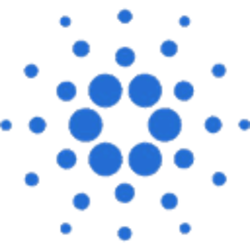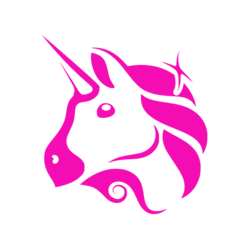"In the AI age our shared understanding of reality is about to change, and Sam Altman thinks that the real and unreal are about to converge." This statement has sparked controversy and discussions among tech enthusiasts and industry experts. Sam Altman, the CEO of OpenAI, has shared his views on the future of photos, suggesting that a significant shift is on the horizon. The Verge recently covered Altman's perspective, highlighting both the agreement and disagreement within the tech community. Let's dive deeper into the implications of Altman's assertions on the future of photography and our perception of reality.
The Evolution of Photography
Photography has come a long way since its inception. From the days of black-and-white film to the era of digital photography, the medium has continuously evolved. Altman's predictions about the future of photos hint at a radical transformation that goes beyond mere technological advancements. As AI technologies become more sophisticated, they are poised to revolutionize the way we capture, edit, and share images.
The integration of AI into photography tools opens up a realm of possibilities, allowing users to enhance and manipulate images in ways that were previously unimaginable. From automated editing algorithms to AI-generated content, the future of photography is set to be both innovative and disruptive. Altman's vision of a convergence between the real and unreal in photos reflects this transformative shift.
The Blurring Line Between Real and Unreal
Altman's assertion that the real and unreal are on the cusp of converging raises important questions about the nature of reality in the digital age. With the rise of deepfake technology and AI-generated content, distinguishing between authentic and fabricated images has become increasingly challenging. The boundaries between what is real and what is artificially created are becoming blurred, raising concerns about the authenticity of photos in the future.
As AI algorithms become more adept at generating lifelike images and videos, the potential for misinformation and manipulation grows. Altman's warning about the convergence of the real and unreal serves as a cautionary tale about the implications of advanced AI technologies on our perception of reality. In a world where photos can be easily doctored and manipulated, the need for critical thinking and media literacy becomes more crucial than ever.
The Impact on Visual Communication
One of the key aspects of Altman's prediction is its impact on visual communication. In an age where images play a central role in how information is conveyed, the evolution of photography has far-reaching implications. As AI technologies enable new modes of image creation and editing, the way we communicate through visuals is set to undergo a profound transformation.
From enhancing the aesthetic quality of photos to creating hyper-realistic simulations, AI-powered tools are reshaping the landscape of visual communication. Altman's vision of a future where the real and unreal converge in images suggests a paradigm shift in how we perceive and interact with visual content. As we navigate this new era of AI-driven photography, our understanding of visual communication will be challenged and redefined.
The Ethics of AI-Generated Content
One of the central concerns surrounding Altman's predictions is the ethical implications of AI-generated content. As AI technologies become increasingly capable of creating realistic images and videos, questions about authenticity and manipulation arise. The potential for misuse of AI-generated content, such as deepfakes and misinformation, raises complex ethical dilemmas that must be addressed.
Altman's assertion that the real and unreal are converging in photos underscores the need for ethical guidelines and regulations to govern the use of AI in photography. As the boundaries between reality and fabrication blur, it becomes imperative to establish standards for the responsible creation and dissemination of AI-generated content. Ensuring transparency and accountability in the use of AI technologies is essential to safeguarding the integrity of visual media.
The Future of Digital Authenticity
Altman's perspective on the future of photos points to a broader conversation about digital authenticity. In an era where the line between real and unreal is increasingly blurred, the concept of authenticity in digital images takes on new significance. As AI technologies enable the creation of hyper-realistic simulations, the notion of authenticity in photography becomes more complex.
The convergence of the real and unreal in photos challenges traditional notions of authenticity and truth in the digital realm. Altman's prediction signals a shift towards a future where the authenticity of images is no longer a straightforward matter. As we grapple with the implications of AI-driven photography, grappling with the concept of digital authenticity will be paramount in shaping our understanding of visual media.
The Role of AI in Shaping Reality
AI technologies are increasingly shaping our perception of reality in profound ways. From personalized algorithms that curate our online experiences to AI-generated content that blurs the line between real and unreal, the influence of AI on our understanding of reality is undeniable. Altman's assertion about the convergence of the real and unreal in photos underscores the transformative power of AI in reshaping our shared reality.
As AI continues to advance and permeate every aspect of our lives, the boundaries between what is real and what is artificially generated will continue to blur. Altman's predictions serve as a reminder of the transformative potential of AI technologies in shaping the future of photography and visual communication. Embracing the role of AI in shaping our perception of reality will be crucial in navigating the complexities of an AI-driven world.
The Need for Critical Engagement
As we stand on the brink of a new era of AI-driven photography, critical engagement with technology becomes more important than ever. Altman's predictions about the future of photos invite us to reflect on the implications of AI technologies on our perception of reality and authenticity. In a landscape where the real and unreal are on the verge of convergence, developing a critical lens towards visual media is essential.
Engaging thoughtfully with AI-driven photography involves questioning the sources of images, verifying the authenticity of content, and staying vigilant against potential manipulations. Altman's vision of a future where AI blurs the boundaries between reality and fabrication underscores the need for active participation and discernment in consuming visual media. By approaching AI technologies with a critical mindset, we can navigate the evolving landscape of photography with awareness and resilience.
The Future of Photography and Beyond
Altman's insights into the future of photos offer a glimpse into the transformative potential of AI technologies in reshaping visual media. As we move towards a future where the real and unreal converge in images, the implications for photography and visual communication are vast. Embracing the opportunities and challenges presented by AI-driven photography will be essential in shaping the future of the medium.
From redefining the boundaries of authenticity to exploring new modes of visual communication, the intersection of AI and photography holds promise for innovation and creativity. Altman's vision of a future where AI revolutionizes photography invites us to rethink our understanding of images, reality, and perception. As we journey into this AI-driven era, the future of photography holds boundless possibilities for creativity, expression, and exploration.
If you have any questions, please don't hesitate to Contact Us
Back to Technology News















































